Technology
Blockchain : What It Is, How It Works, Why It Matters
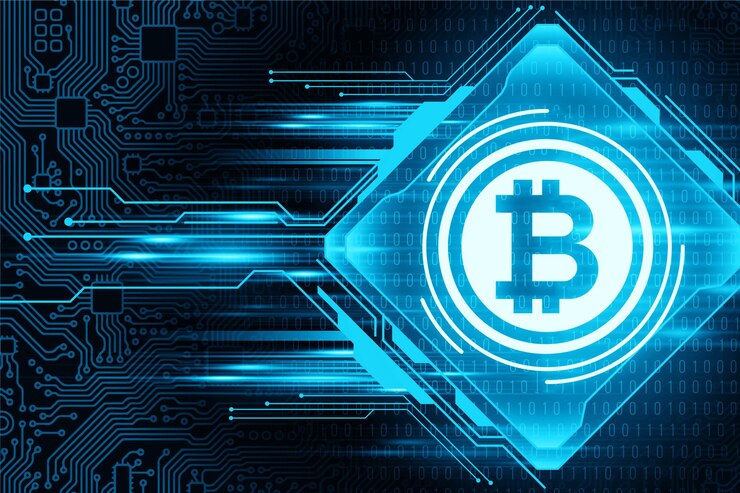
In today’s digital landscape, the concept of blockchain technology stands out as a revolutionary advancement in data management and security. Originally popularized by cryptocurrencies like Bitcoin, blockchain technology is now recognized for its potential applications across various industries, from finance to healthcare. This article delves into the intricacies of blockchain technology, explaining what it is, how it works, its benefits, challenges, applications, types, and its future significance.
1. Introduction to Blockchain
Blockchain is a decentralized ledger technology that enables the recording of transactions across multiple computers in such a way that the registered transactions cannot be altered retroactively. This technology provides a secure, tamper-proof environment for data management, ensuring that all participants in the network can trust the integrity of the data without needing a central authority.
Each transaction on a blockchain is encapsulated in a block. Once a block is filled with transaction data, it is appended to a chain of previous blocks, forming a secure and chronological record. This decentralized architecture reduces the risk of data breaches and fraud, making blockchain an attractive solution for various applications.
2. How Blockchain Works
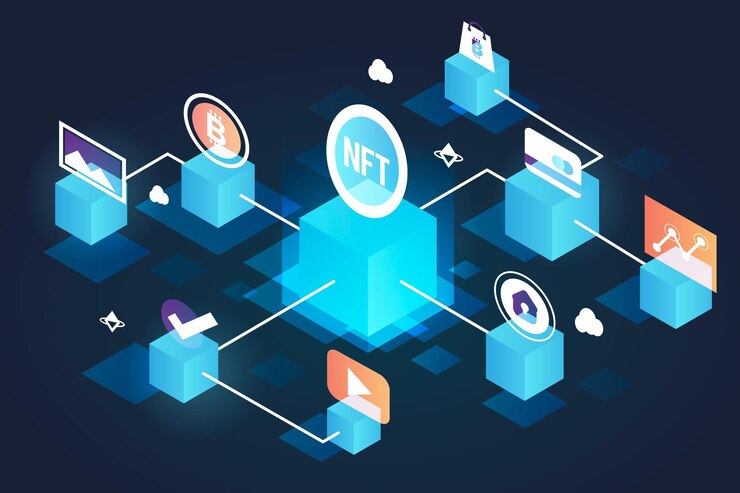
Image by Freepik.com
Blockchain technology relies on a network of nodes (computers) that participate in maintaining the ledger. When a transaction occurs, it is broadcasted to all nodes in the network. Here’s a step-by-step breakdown of how blockchain works:
- Transaction Initiation: A user initiates a transaction, which is then transmitted to the network.
- Validation: Nodes in the network validate the transaction using consensus mechanisms, such as proof of work or proof of stake.
- Block Creation: Once validated, the transaction is bundled with others into a new block.
- Appending to Blockchain: The new block is appended to the existing blockchain, creating an immutable record.
- Distribution: The updated blockchain is distributed across all nodes, ensuring that every participant has the latest version of the ledger.
Consensus Mechanisms
Consensus mechanisms are critical to the functioning of blockchain networks, ensuring all participants agree on the validity of transactions before they are added to the blockchain.
- Proof of Work (PoW): In PoW, nodes compete to solve complex mathematical problems. The first node to solve the problem gets the right to add the next block to the blockchain. This process requires substantial computational power and energy, making it secure but environmentally challenging. For example, Bitcoin relies on the PoW mechanism, which has raised concerns about its energy consumption.
- Proof of Stake (PoS): In contrast to PoW, PoS allows participants to validate transactions based on the number of coins they hold. This reduces energy consumption significantly and incentivizes participants to maintain network integrity. Ethereum is transitioning from PoW to PoS to address energy concerns while maintaining security.
3. Benefits of Blockchain
More Security
Blockchain technology offers enhanced security through its use of cryptography and decentralized architecture. Each transaction is encrypted and linked to the previous transaction, making it nearly impossible to alter the data without detection. Additionally, consensus mechanisms like PoW and PoS ensure that only valid transactions are added to the blockchain.
Example: Bitcoin
Bitcoin’s security features have made it a leading cryptocurrency. The PoW mechanism secures the network by requiring miners to solve complex puzzles, making it costly and time-consuming for malicious actors to manipulate transaction data. The more computational power a miner has, the higher their chances of successfully adding a block, ensuring that the network remains secure.
Improved Accuracy
Blockchain’s transparent and immutable ledger minimizes errors that often occur in traditional record-keeping systems. Since all participants can access the same data, discrepancies between different versions of records are virtually eliminated.
Example: Land Registries
Several countries are exploring blockchain for land registries. By recording land ownership on a blockchain, authorities can ensure that property records are accurate and tamper-proof, reducing disputes and fraud related to land ownership.
Higher Efficiency
Blockchain eliminates intermediaries in many processes, streamlining operations and reducing transaction costs. Smart contracts automate processes, enabling transactions to execute automatically when predetermined conditions are met.
Example: Supply Chain Management
In supply chain management, companies like IBM are using blockchain to streamline processes by tracking products from origin to destination. This not only reduces errors but also speeds up transactions and enhances data integrity.
4. Challenges of Blockchain
Despite its numerous benefits, blockchain technology faces several challenges that hinder its widespread adoption.
Transaction Limitations
As blockchain networks grow, they often face bottlenecks in processing transactions. High demand can lead to congestion, resulting in slower transaction times and increased fees.
Example: Ethereum Network Congestion
The Ethereum network has experienced significant congestion during periods of high demand, particularly during Initial Coin Offerings (ICOs) and NFT launches. This congestion leads to higher gas fees and slower transaction confirmations, prompting the need for scalability solutions.
Energy Consumption
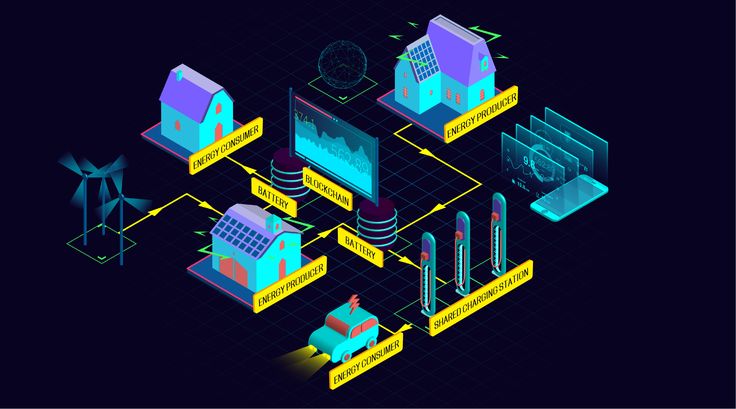
Image by Yandex.com
The energy consumption associated with PoW consensus mechanisms raises concerns about environmental sustainability. Critics argue that the carbon footprint of mining activities can negate the benefits of blockchain.
Example: Bitcoin’s Environmental Impact
Bitcoin mining has been criticized for its substantial energy consumption, equivalent to that of some countries. This has led to calls for more sustainable alternatives, such as PoS, which drastically reduce energy usage.
Scalability Issues
Scalability remains a significant hurdle for many blockchain networks. As the number of users and transactions increases, the capacity of the blockchain to process data efficiently is put to the test.
Example: Scalability Solutions
To address scalability issues, various solutions have emerged, including Layer 2 scaling solutions like the Lightning Network for Bitcoin, which enables faster transactions by creating off-chain payment channels.
Regulation Concerns
As blockchain technology evolves, governments are grappling with how to regulate it effectively. The decentralized nature of blockchain presents challenges in enforcing legal frameworks and protecting consumers.
Example: Regulatory Responses
Countries like China have adopted strict regulations on cryptocurrency trading and Initial Coin Offerings (ICOs), while others, like El Salvador, have embraced Bitcoin as legal tender. The inconsistent regulatory landscape creates uncertainty for businesses operating in the blockchain space.
5. Blockchain Applications and Use Cases
Banking
Blockchain technology simplifies banking operations, allowing for faster, cheaper, and more secure transactions. By serving as a single source of truth, blockchain minimizes fraud and enhances trust among participants.
Example: Ripple
Ripple’s blockchain platform enables banks to process cross-border payments quickly and securely, reducing transaction costs and settlement times significantly compared to traditional banking systems.
Smart Contracts
Smart contracts are self-executing contracts with the terms of the agreement directly written into code. These contracts automate and enforce agreements without the need for intermediaries.
Example: Ethereum
Ethereum is the leading platform for smart contracts, enabling developers to create decentralized applications (dApps) that run on its blockchain. These applications range from finance (DeFi) to gaming and supply chain management.
Cybersecurity

Photo by Jefferson Santos on Unsplash
Blockchain technology enhances cybersecurity by providing a decentralized and tamper-proof ledger. This makes it challenging for unauthorized users to alter data or steal sensitive information.
Example: Cybersecurity in Finance
Banks are increasingly adopting blockchain technology to secure their digital assets and protect against fraud. The decentralized nature of blockchain helps safeguard sensitive customer information and reduces the risk of cyberattacks.
Healthcare
In the healthcare sector, blockchain technology ensures the secure and efficient exchange of medical records, improving patient outcomes and reducing administrative overhead.
Example: MedRec
MedRec is a blockchain-based system developed by MIT that allows patients to control access to their medical records. By leveraging blockchain, patients can share their health data securely with healthcare providers and researchers while maintaining privacy.
Logistics
Blockchain enhances supply chain transparency by enabling real-time tracking of goods from origin to destination. This transparency improves efficiency and reduces fraud.
Example: IBM Food Trust
IBM Food Trust is a blockchain-based platform that allows food producers, distributors, and retailers to track food products throughout the supply chain. This transparency helps ensure food safety and reduces the risk of contamination.
NFTs
Non-Fungible Tokens (NFTs) represent ownership of unique digital assets and are secured using blockchain technology. Each NFT is distinct and cannot be exchanged for another on a one-to-one basis.
Example: OpenSea
OpenSea is a popular marketplace for buying, selling, and trading NFTs. The blockchain ensures the authenticity and ownership of each NFT, preventing counterfeiting and enabling artists to receive royalties from future sales.
6. Types of Blockchain
Public Blockchain
Public blockchains are open to anyone, allowing users to join and participate in the network without restrictions. These networks are fully decentralized and rely on consensus mechanisms like PoW or PoS.
Example: Bitcoin
Bitcoin is the most well-known public blockchain. It allows anyone to participate in mining and transaction validation, contributing to its decentralized nature.
Private Blockchain
Private blockchains restrict access to a select group of users. These networks are typically managed by a single organization or consortium, making them suitable for enterprises that require confidentiality and control.
Example: Hyperledger Fabric
Hyperledger Fabric is a permissioned blockchain framework designed for enterprise use. It enables businesses to create private blockchains for their specific applications, allowing for greater control over data access and privacy.
Consortium Blockchain
Consortium blockchains are governed by a group of organizations rather than a single entity. This collaborative approach allows multiple parties to manage the network while maintaining some level of privacy.
Example: R3 Corda
R3 Corda is a consortium blockchain platform specifically designed for the financial services industry. It allows banks and financial institutions to transact securely while preserving confidentiality.
Hybrid Blockchain
Hybrid blockchains combine elements of both public and private networks, allowing organizations to maintain privacy while benefiting from the transparency of a public blockchain.
Example: Dragonchain
Dragonchain is a hybrid blockchain platform that allows businesses to choose which data they want to keep private and which data they want to make public. This flexibility makes it suitable for various applications across industries.
7. Future of Blockchain
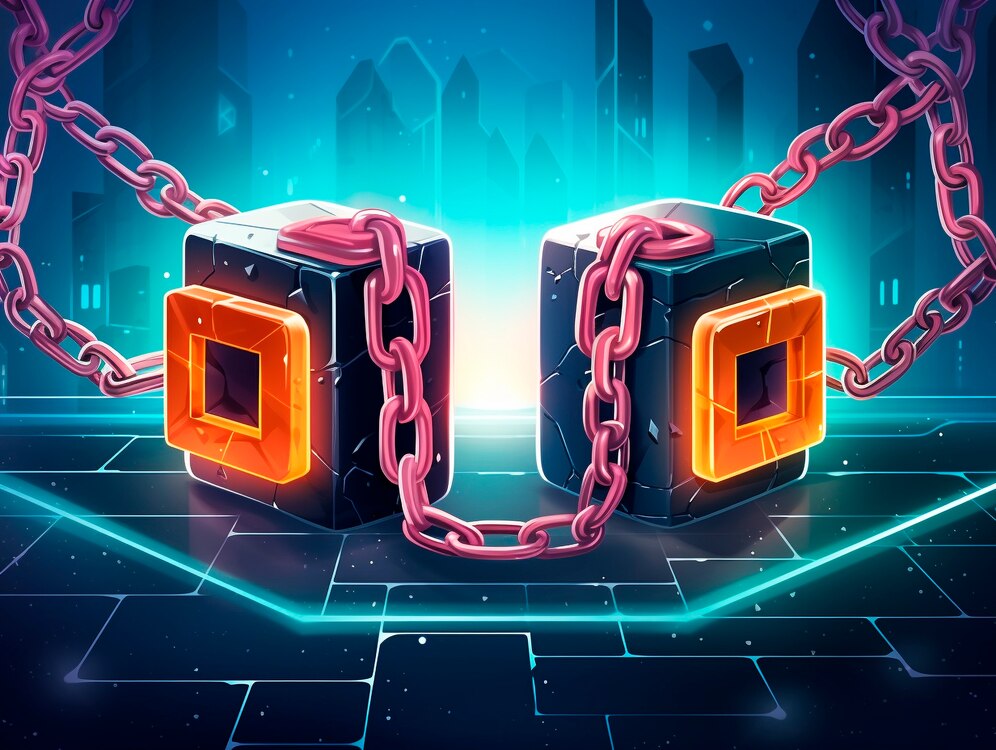
Image by Freepik.com
The future of blockchain technology is promising, with ongoing innovations aimed at addressing existing challenges. Key trends shaping the future of blockchain include:
- Interoperability: As multiple blockchain networks emerge, the ability to communicate and share data across different platforms will be essential. Projects like Polkadot and Cosmos are working to create interconnected ecosystems that facilitate seamless data transfer.
- Regulatory Clarity: As governments develop clearer regulations for blockchain and cryptocurrencies, businesses will gain more confidence to invest in and adopt blockchain solutions.
- Decentralized Finance (DeFi): DeFi platforms are gaining popularity, enabling users to lend, borrow, and trade assets without traditional financial intermediaries. This trend will continue to grow as more users seek financial independence.
- Sustainability Initiatives: The blockchain community is increasingly focused on reducing energy consumption and environmental impact. Projects exploring eco-friendly consensus mechanisms, like PoS, will play a crucial role in the technology’s sustainability.
8. Analysis and Comparative Tables
Analysis Table: Benefits vs. Challenges of Blockchain
| Aspect | Benefits | Challenges |
|---|---|---|
| Security | Cryptographically secure permanent records | Vulnerable to attacks if not properly managed |
| Accuracy | Transparent, immutable ledger | Requires consensus, which can be slow |
| Efficiency | Reduced costs and improved processing times | Transaction bottlenecks during high demand |
| Energy Consumption | Alternatives like PoS are being explored | PoW consumes significant energy |
| Regulatory Concerns | Enables new business models and transparency | Legal frameworks still evolving |
Comparative Table: Consensus Mechanisms
| Feature | Proof of Work | Proof of Stake |
|---|---|---|
| Energy Consumption | High (computationally intensive) | Low (energy-efficient) |
| Security | Highly secure, but slower transaction | Secure with faster processing |
| Centralization Risk | Less risk of centralization | Potential for centralization if few hold majority coins |
| Use Case | Bitcoin, Ethereum | Cardano, Polkadot |
Comparative Table: Types of Blockchain
| Type | Access | Governance | Use Cases |
|---|---|---|---|
| Public Blockchain | Open to all | Decentralized | Cryptocurrencies, public records |
| Private Blockchain | Restricted | Centralized or consortium | Enterprise applications, internal processes |
| Consortium Blockchain | Semi-restricted | Group of organizations | Financial services, supply chains |
| Hybrid Blockchain | Mixed | Varies | Flexible enterprise solutions, data privacy |
Examples of Blockchain in Action
- Banking: Ripple’s blockchain facilitates real-time cross-border payments, reducing transaction costs and processing times significantly compared to traditional banking systems.
- Healthcare: MedRec allows patients to maintain control over their medical records while enabling healthcare providers to access verified information quickly and securely.
- Supply Chain: IBM Food Trust improves food safety by allowing participants to track products from farm to table, providing transparency and accountability in the supply chain.
- NFTs: OpenSea has become a leading marketplace for NFTs, enabling artists to monetize their digital creations while ensuring the authenticity of ownership through blockchain.
By understanding blockchain technology’s intricacies and its wide array of applications, stakeholders can better navigate the challenges and opportunities it presents, ultimately driving innovation across multiple sectors. The road ahead for blockchain is filled with possibilities, and its potential to reshape industries and enhance efficiencies is only just beginning to be realized.
Conclusion
Blockchain technology is poised to transform various industries by providing secure, efficient, and transparent solutions for data management. Despite the challenges it faces, ongoing advancements and innovations will drive its adoption and pave the way for new applications. As organizations increasingly recognize the value of blockchain, its potential to reshape the future of business, finance, healthcare, and beyond becomes ever more apparent.
Technology
A Comprehensive User Guide to Contact Spectrum.net Mail Support

Introduction
This guide details all available contact methods, including the direct support number +1-877-337-8298 (toll-free), for quick help with your Roadrunner email or technical concerns.
Explore multiple ways to reach Roadrunner (Spectrum) support—by phone, email, live chat, or social media. You’ll also find key hotline numbers, troubleshooting resources, and step-by-step contact options to help resolve your Roadrunner email issues efficiently.
Overview
The best way to contact the Roadrunner customer service team is through the Spectrum online help center. To reach Roadrunner via phone, call +1-877-337-8298 using the number linked to your Roadrunner email account. The Spectrum Mail support website is packed with articles covering nearly each Roadrunner email topic and also offers a live chat feature to connect with a support representative online.
Roadrunner, now operating under the Spectrum brand, continues to serve as a dependable email service for many users across the U.S. Despite changes in branding and service management, countless individuals still rely on their Spectrum.net email accounts for everyday communication and professional use. This guide provides full summary of Roadrunner’s customer service and email support, including how to connect with knowledgeable representatives and effectively troubleshoot common email issue. Whether you’re facing login errors, password issues, or configuration glitches, Roadrunner support is available 24/7 at +1-877-337-8298 to assist you promptly.
Benefits of Roadrunner Customer Service
Reliable customer service is crucial for any email provider, and Roadrunner—now part of Spectrum continues to offer dedicated support for its users. Whether it’s login issues, email troubleshooting, or security concerns, Roadrunner’s responsive support team plays a vital role in maintaining user satisfaction and trust. For assistance, users can contact Roadrunner customer service at 1-877-337-8298.
To connect with Roadrunner customer service, users can find the phone number on the official Spectrum support page. The primary customer service number for roadrunner is: For more specialized support, you can also reach out to the technical support team. Here are a few additional contact options:
- Technical Support: +1-877-337-8298.
Tips for Contacting Roadrunner Support
When reaching to Roadrunner customer service, it’s important to be prepared. Here are some tips to help ensure a smooth experience:
- Collect Information: Before calling, have your account details ready, including your email address, account number, and any relevant information about the issue.
- Be Clear and Brief: Clearly explain the problem and mention any troubleshooting steps you’ve already tried.
- Note Down Instructions: Keep a pen and paper handy to write down instructions or note numbers provided by the support representative.
- Follow-Up: If the problem isn’t resolved right away, ask for a case number and follow up as needed.
For assistance, you can contact Roadrunner technical support at 1-877-337-8298, now under the Spectrum brand.
Accessing Roadrunner Email Support
Roadrunner offers reliable email support through their online platform. Here are the key features and how to access them:
- Accessing Roadrunner Email: Users can log in to their Roadrunner email account via the Spectrum website or the Yahoo Mail portal. Simply enter your email address and password to access your inbox.
- Password Recovery: If you’ve forgotten your password, use the “Forgot Password” link on the login page to reset it. You’ll need to answer security questions or use a recovery email to regain access.
- Spam and Security Settings: Manage your spam filters and security settings from the email settings menu to keep your inbox clean and secure.
For extra help, you can contact Roadrunner support at 1-877-337-8298.
Troubleshooting Common Roadrunner Email issue
Although Roadrunner is generally reliable, users may occasionally experience issues. Here are some common issues and how to resolve them:
- Email Login Issues: If you’re having trouble logging in, double-check that you’re using the correct username and password. Ensure your internet connection is stable. If the issue continues, try clearing your browser’s cache and cookies.
- Password Recovery issues: If you’re not able to reset your password, make sure you’re using the correct recovery options. If you’re still locked out, contact Roadrunner customer support at 1-877-337-8298 for further assistance.
- Email Not Sending/Receiving: Verify that your outgoing (SMTP) and incoming (IMAP/POP) server settings are correctly configured. Make sure your internet connection is active and that no firewall or security software is blocking access.
- Spam and Phishing Issues: If you get to know an increase in spam or phishing emails, update your spam filter settings and report suspicious messages. Avoid clicking on links or downloading attachments from unknown senders.
Final Thoughts
Roadrunner remains a trusted email service provider for many users. By learning how to navigate its customer service and support options, you can resolve issues quickly and with minimal hassle. Whether you’re facing login difficulties, password recovery challenges, or email configuration issues, Roadrunner’s support team is here to help.
To get rid of these common problems, always keep your account information secure and update your security settings frequently. If you need assistance at any time, don’t hesitate to contact Roadrunner customer service at 1-877-337-8298 for reliable support.
Roadrunner Email Support: FAQs
Q1: How can I reach Roadrunner customer service?
You can reach Roadrunner customer service by calling the toll-free number: 1-877-337-8298, available 24/7. Additionally, you can access support through the Spectrum website’s live chat feature, email support, and social media channels.
Q2: What should I do if I forget my Roadrunner email password?
Use the “Forgot Password” link on the login page to reset your password. You may need to answer security questions or use a recovery email. If you’re unable to reset it, contact customer service for assistance at 1-877-337-8298.
Q3: How do I set up email forwarding from my Roadrunner account?
Log in to your Roadrunner email account, navigate to Settings, then look for the Forwarding section. Enter the destination email address and save changes.
Q4: Why am I not receiving emails in my Spectrum.net email account?
Check your spam/junk folder, internet connection, and verify your server settings (IMAP/POP). Also, ensure no filters are blocking incoming emails. For persistent issues, contact support.
Q5: How can I enhance the security of my Roadrunner email account?
Enable Two-Factor Authentication (2FA), use strong and unique passwords, regularly update your security settings, and avoid public Wi-Fi without a VPN.
Q6: What are the common server settings for Roadrunner email?
Incoming (IMAP): mail.twc.com, Port 993, SSL enabled
Incoming (POP): mail.twc.com, Port 995, SSL enabled
Outgoing (SMTP): mail.twc.com, Port 587, SSL or STARTTLS enabled
Q7: How do I report spam or phishing emails in my Roadrunner account?
Mark suspicious messages as spam and report them through your email interface. Avoid clicking on any unknown links or downloading attachments.
Q8: Can I access my Roadrunner email on mobile devices?
Yes. Configure your device’s email app using the appropriate IMAP or POP settings to access your Roadrunner emails.
Technology
AI Code Tools Market: Transforming Software Engineering
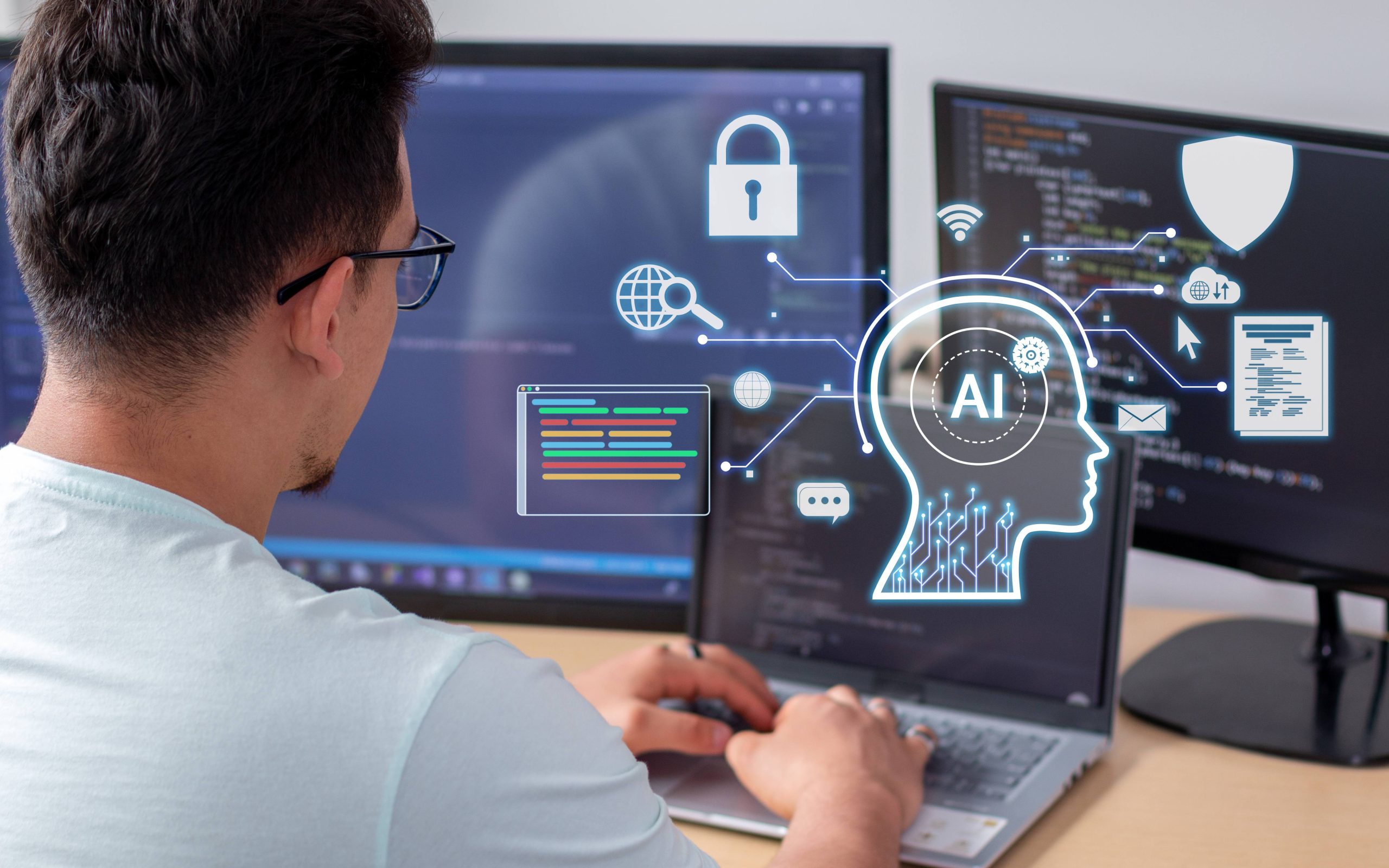
Introduction
The global AI code tools market has emerged as one of the fastest-growing segments of the software development ecosystem. Valued at USD 4,284.7 million in 2023, the market is estimated to rise to USD 5,257.9 million in 2024, and further accelerate to USD 22,995.0 million by 2031, reflecting an exceptional CAGR of 23.47% during the forecast period.
Get Full Detailed PDF Report: https://www.kingsresearch.com/ai-code-tools-market-1600
This robust expansion is largely driven by continuous breakthroughs in large language models (LLMs)—the technological engine behind AI-powered code generation, debugging, refactoring, and workflow automation. With enterprises adopting AI-assisted software development models, AI code tools are rapidly becoming a strategic imperative.
Market Overview
AI code tools leverage machine learning, natural language processing, and generative AI to streamline and partially automate software development tasks. These solutions significantly reduce developers’ workloads by:
- Automatically generating code snippets or entire modules
- Identifying and resolving bugs in real-time
- Enhancing code quality through intelligent suggestions
- Accelerating software delivery cycles
- Providing rapid prototyping capabilities
- Automating documentation creation
As organizations pivot toward digital transformation and cloud-native software architecture, the demand for intelligent coding assistants continues to escalate. Moreover, hybrid and remote work models have intensified the need for seamless collaboration tools, making AI-driven coding platforms indispensable.
Market Dynamics
Drivers
1. Advancements in Large Language Models (LLMs)
Generative AI models such as GPT-based architectures, Code Llama, Gemini, Claude, and similar advanced coding LLMs have revolutionized developer productivity. These models now support multi-language code interpretation, deep refactoring, reasoning, and architectural recommendations. Their rapid evolution significantly enhances coding accuracy, reduces development time, and increases automation efficiency.
2. Rising Software Development Complexity
Modern applications require multi-layered integrations, microservices, and continuous updates. AI tools simplify this complexity by offering intelligent support across the entire software lifecycle.
3. Increasing Adoption of CI/CD and DevOps Frameworks
AI accelerates DevOps pipelines by automating testing, security checks, and deployment processes. Organizations adopting DevSecOps are particularly inclined toward AI-enhanced coding environments.
4. Talent Shortages in the Software Industry
Global demand for developers continues to exceed supply. AI tools bridge this gap by boosting developer productivity, enabling companies to achieve more with fewer human resources.
5. Growing Cloud and SaaS Adoption
Cloud-based AI coding tools are easy to deploy, scalable, and continuously updated—making them attractive to startups and large enterprises alike.
Restraints
- Data security concerns regarding intellectual property exposure
- Bias or inaccuracies in generative AI output
- High dependency risks, where teams over-rely on automated code suggestions
- Integration challenges with legacy environments
Opportunities
- AI-driven autonomous coding platforms capable of generating full software applications
- AI-based testing automation, reducing manual QA efforts
- Vertical-specific AI coding solutions (healthcare, BFSI, telecom)
- Enterprise-grade secure LLMs for proprietary coding assistants
Market Segmentation Analysis
By Component
1. Tools
The tools segment dominates the market due to rising adoption of AI-powered coding assistants, debuggers, and automated testing tools. Products such as GitHub Copilot, Amazon CodeWhisperer, Tabnine, and JetBrains AI Assistant have set industry standards for intelligent coding experiences.
Key functionalities include:
- Code generation
- Semantic search
- Intelligent debugging
- Code optimization
- Automated documentation
2. Services
The services segment includes:
- Integration & deployment services
- Consulting services
- Training & support
- Managed AI coding services
As enterprises adopt AI development ecosystems at scale, demand for professional services continues to grow.
By Deployment
1. Cloud-based
Cloud-based solutions hold the largest market share, attributed to their flexibility, ease of integration, and cost-effectiveness. Continuous updates, reduced operational overheads, and accessibility make cloud deployment the preferred model for developers worldwide.
2. On-premises
On-premises deployment is preferred by enterprises dealing with sensitive data—such as financial institutions, government agencies, and defense organizations. With the rise of private LLMs, on-prem AI coding tools are expected to witness steady uptake.
By Technology
1. Machine Learning
ML underpins predictive coding, bug detection, and pattern recognition. It improves over time as it learns developer preferences and coding styles.
2. Natural Language Processing (NLP)
NLP converts human-like queries into working code. Developers can describe functionality in plain language, and the AI translates it into structured code.
3. Generative AI
Generative AI is the most impactful technology within this market. It excels at:
- Full code generation
- Architectural recommendations
- Automated refactoring
- Synthetic data creation for testing
This segment is expected to grow at the fastest rate due to continuous LLM advancements.
By Application
Key applications include:
1. Code Generation
AI-generated code accelerates development by up to 55%, making this the largest application segment.
2. Debugging & Bug Fixing
AI identifies vulnerabilities and bugs faster than traditional static analysis tools.
3. Code Refactoring
AI can restructure existing codebases efficiently, improving maintainability and reducing technical debt.
4. Testing Automation
Generative AI can create test cases, predict potential failure points, and optimize CI/CD pipelines.
5. Documentation & Knowledge Management
AI tools automatically create and maintain project documentation, improving collaboration and onboarding efficiency.
By Vertical
1. IT & Telecom
The largest vertical, driven by digital transformation initiatives and adoption of AI-enabled development platforms.
2. BFSI
Banks and financial services use AI coding tools to modernize legacy systems, increase security, and improve operational efficiency.
3. Healthcare & Life Sciences
AI supports automation in EHR systems, medical software development, and compliance-based coding.
4. Retail & E-commerce
AI accelerates development of omnichannel platforms, inventory management tools, and personalization systems.
5. Manufacturing
Used in industrial automation software, predictive maintenance tools, and IoT applications.
6. Government & Defense
High-security, on-premises AI coding tools support mission-critical applications.
Regional Analysis
1. North America
North America dominates the AI code tools market due to:
- Strong presence of leading technology companies
- Early adoption of AI-driven software development
- High investment in R&D and cloud infrastructure
The U.S. accounts for the majority of regional revenue.
2. Europe
Europe is experiencing significant demand due to digital transformation in manufacturing, automotive, and BFSI sectors. Strict data privacy regulations (GDPR) are driving adoption of secure AI coding solutions.
3. Asia-Pacific
Asia-Pacific is the fastest-growing region, fueled by:
- Rapid expansion of IT services
- Growth of startups
- Government-led AI adoption initiatives
- Increasing cloud penetration in China, India, and Southeast Asia
4. Middle East & Africa
Growth is driven by investments in smart city projects, fintech development, and public sector modernization.
5. Latin America
The region is gradually adopting AI coding tools through expanding tech ecosystems in Brazil, Mexico, and Argentina.
Competitive Landscape
The market is moderately fragmented, with major players investing in advanced LLMs, security-enhanced coding platforms, and domain-specific AI tools.
1. Key Players
- GitHub (Microsoft)
- Amazon Web Services
- IBM
- JetBrains
- Meta Platforms
- OpenAI
- Tabnine
- Replit
- Sourcegraph
2. Strategic Initiatives
- Launch of enterprise-grade AI assistants
- Partnerships with cloud providers
- Integration with DevOps and security platforms
- Development of on-premise AI models
Future Outlook (2024–2031)
The AI code tools market is poised for exponential growth. Key future developments include:
1. Autonomous Software Engineering
AI systems will increasingly design, code, test, and deploy software with minimal human intervention.
2. Domain-Specific Coding Models
Healthcare, finance, and aerospace will adopt specialized LLMs trained on industry-specific coding standards.
3. AI-Augmented Cybersecurity Coding
Tools will automatically identify vulnerabilities, enforce compliance, and generate secure code.
4. AI for Legacy Modernization
AI coding tools will automate migration from COBOL, Java, and .NET legacy systems to modern stacks.
5. Enhanced Human-AI Collaboration
Developers will shift from writing code to supervising AI-generated outputs, improving strategic productivity.
Conclusion
The global AI code tools market is entering a transformative phase as generative AI reshapes the future of software development. With a projected market value of USD 22.99 billion by 2031, the sector promises remarkable opportunities across industries. Businesses leveraging AI-enhanced coding will achieve faster development cycles, reduced costs, improved quality, and strong competitive advantages.
About Kings Research
Kings Research is a leading market research and consulting firm that provides comprehensive market intelligence and strategic insights to businesses across various industries.
Explore More Articles:
Technology
5G Infrastructure Market Size and Growth Forecast to 2032
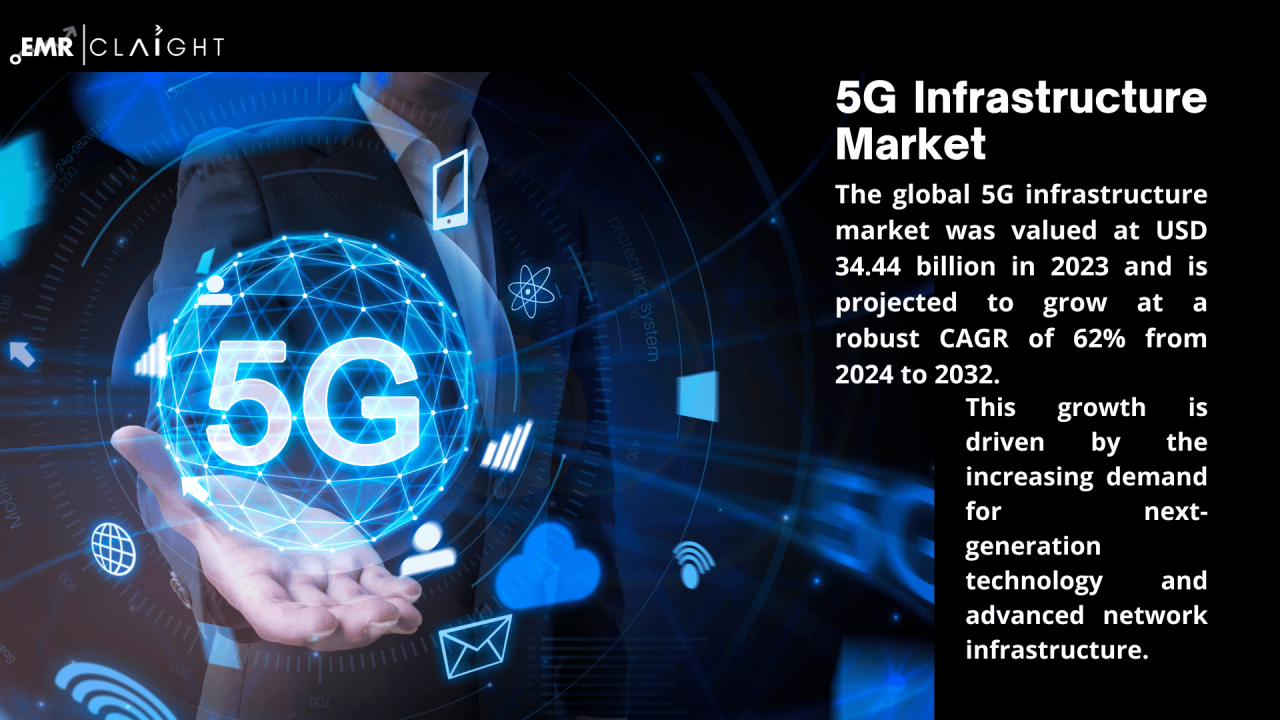
Introduction
The global 5G infrastructure market size was valued at USD 15.76 billion in 2024 and is projected to grow from USD 19.36 billion in 2025 to USD 95.54 billion by 2032, exhibiting a robust CAGR of 25.61% during the forecast period. This rapid market expansion is driven by the surge in connected devices, ultra-reliable low-latency communication (URLLC), the rise of Industry 4.0, and global digital transformation initiatives.
5G Infrastructure Market: Key Highlights
The 5G infrastructure market is witnessing unprecedented acceleration as telecom operators, governments, and enterprises invest heavily in next-generation wireless communication systems. The shift from 4G to 5G marks a revolutionary transition in global connectivity, enabling faster data speeds, higher network capacity, and expanded support for emerging technologies such as autonomous mobility, smart cities, cloud gaming, and remote robotics.
Key industry players are deploying small cells, RAN (Radio Access Network), NFV (Network Function Virtualization), and massive MIMO technologies to strengthen network capacity and coverage. Additionally, 5G’s ability to support up to 1 million connected devices per square kilometer is catalyzing advancements across IoT ecosystems and industrial automation.
Regions such as North America and Asia-Pacific are at the forefront of 5G deployment, backed by substantial government support, spectrum allocations, and infrastructure investments. Strategic collaborations between telecom equipment manufacturers, cloud providers, and enterprises are further shaping market dynamics.
The rising demand for high-speed internet, increasing mobile data usage, and expansion of private 5G networks are expected to open significant revenue opportunities across the global landscape.
Get a Sample PDF of the 5G Infrastructure Market Size and Forecast [2025–2032]
1. 5G Infrastructure Market Drivers and Emerging Trends to 2033
Massive global investments in digital transformation and the adoption of automation in industrial settings are key factors propelling 5G infrastructure demand. As per industry analysis, more than 75% of global telecom operators have announced plans to deploy 5G networks by 2030. The rising popularity of smart devices, AI applications, remote healthcare, and augmented reality (AR) is reinforcing the need for an advanced connectivity backbone.
Governments worldwide are supporting the rollout of 5G through spectrum auctions, infrastructure subsidies, and policy frameworks aimed at digital inclusivity. Countries like the U.S., China, South Korea, Germany, and Japan have already made significant infrastructural investments, accelerating the shift toward hyper-connected digital economies.
2. Market Drivers
1. Surge in IoT and Connected Devices
The explosion of IoT-enabled devices across industrial, commercial, and residential sectors demands high-speed, low-latency data transfer. 5G infrastructure supports massive device connectivity, enabling real-time communication critical for smart manufacturing, logistics, intelligent transportation, and healthcare monitoring.
2. Rising Adoption of Cloud & Edge Computing
Edge computing relies heavily on stable and high-speed 5G networks to process data closer to the source. With enterprises increasingly moving toward cloud-native architectures, 5G acts as a catalyst for high-performance computing and real-time analytics.
3. Government Initiatives to Promote Digital Transformation
National 5G strategies and global spectrum allocations are driving telecom expansion. Initiatives such as India’s Digital Bharat, China’s New Infrastructure Plan, and the EU’s 5G Action Plan are fueling infrastructure development at a massive scale.
3. Emerging Trends
1. Private 5G Networks
Industries such as manufacturing, mining, logistics, and energy are adopting private 5G networks to enhance operational efficiency, automation, and worker safety.
2. Network Slicing
This upcoming technology allows carriers to allocate specific network segments for different uses such as healthcare, industrial automation, and entertainment maximizing performance and resource efficiency.
3. Integration with AI and Machine Learning
AI-driven 5G networks enable predictive maintenance, smart traffic routing, and automated system optimization, significantly reducing downtime and improving network performance.
4. Expansion of 5G-enabled Consumer Services
Advanced applications like mobile cloud gaming, VR/AR experiences, streaming, and immersive entertainment are transforming digital consumption patterns.
Why This Report Stands Out
This comprehensive 5G infrastructure market report delivers actionable insights essential for telecom providers, technology innovators, investors, and policymakers. It explores market dynamics, technology segmentation, industry trends, and competitive benchmarking, helping stakeholders make strategic decisions.
The report offers in-depth regional analysis, investment trends, and market forecasts, empowering organizations to plan infrastructure deployments, identify growth hotspots, and map competition across global markets.
Who Are the Largest Global Manufacturers in the 5G Infrastructure Market?
Leading players dominating the market include:
- Huawei Technologies Co., Ltd.
- Ericsson
- Nokia Corporation
- ZTE Corporation
- Samsung Electronics Co., Ltd.
- Qualcomm Technologies, Inc.
- Cisco Systems, Inc.
- NEC Corporation
- Fujitsu
- Intel Corporation
- Mavenir
- CommScope
- AT&T
- Verizon
- China Mobile
These companies are investing heavily in R&D, network trials, AI-driven optimization technologies, and large-scale commercial deployments to strengthen their market presence. Strategic alliances and collaborations are rapidly transforming the competitive landscape.
What Are the Factors Driving the Growth of the Global 5G Infrastructure Market?
The 5G infrastructure market is segmented based on component, technology, and end-user industries.
1. By Component
Hardware
- Small Cells
- Macro Cells
- Massive MIMO
- RAN
Software
- Services
- Deployment
- Integration
- Maintenance
2. By Technology
- Network Function Virtualization (NFV)
- Software-Defined Networking (SDN)
- Cloud-Native 5G
- Mobile Edge Computing
3. By End User
- Industrial
- Commercial
- Residential
- Telecom Operators
- Government & Defense
The ability of 5G networks to support mission-critical communication, extreme mobile broadband, and massive IoT makes them indispensable for modern digital ecosystems. These applications reduce network congestion, enhance operational efficiency, and provide new business opportunities.
5G Infrastructure Market Future Scope, Trends, and Forecast [2025–2032]
The outlook for the 5G infrastructure market remains extremely promising. The rapid digitalization of industries, expansion of autonomous vehicles, and modernization of healthcare systems are expected to accelerate adoption further.
The next decade will witness large-scale deployment of:
- Smart cities powered by 5G
- Automated factories
- Connected public transportation
- Drone-based delivery and surveillance
- 5G-enabled telemedicine and robotic surgeries
Growing reliance on online services, increasing mobile traffic, and the need for robust and resilient communication networks further highlight the importance of 5G. Cybersecurity and privacy concerns will shape infrastructure development as telecom operators focus on building secure, reliable, and compliant network architectures.
Which Regions Are Leading the Global 5G Infrastructure Market?
1. North America
- United States
- Canada
North America leads due to early technology adoption, mature telecom infrastructure, and significant investment from private telecom companies.
2. Europe
- United Kingdom
- Germany
- France
- Netherlands
- Rest of Europe
Europe is emerging as a strong hub for 5G innovation supported by the EU’s digital strategy, strong automotive sector, and extensive R&D activities.
3. Asia-Pacific
- China
- Japan
- South Korea
- India
- Australia
- Southeast Asia
Asia-Pacific is expected to register the fastest CAGR due to rapid urbanization, large-scale telecom investments, and government-led initiatives for digital transformation.
4. Latin America
- Brazil
- Mexico
- Chile
- Argentina
Growing demand for high-speed connectivity and expansion of urban telecom networks are fueling adoption.
5. Middle East & Africa
- UAE
- Saudi Arabia
- South Africa
- Rest of MEA
The region is becoming a major growth frontier driven by smart city projects, oil & gas digitization, and national modernization initiatives.
Detailed TOC of Global 5G Infrastructure Market Research Report (2024–2032)
- Introduction
- Executive Summary
- Research Methodology
- Market Dynamics
- Drivers
- Restraints
- Opportunities
- Market Outlook
- By Component Analysis
- By Technology Analysis
- By End User Analysis
- Regional Analysis
- Competitive Landscape
- Company Profiles
Kings Research Says
The 5G Infrastructure Market is set to redefine the global digital landscape by enabling unprecedented levels of connectivity, automation, and efficiency. As governments and enterprises pursue digital transformation, 5G networks will become foundational to innovation, economic growth, and technological advancement.
With strong momentum, ongoing R&D, and expanding commercial deployment, 5G infrastructure will play a critical role in shaping the future of communication, industry, and society.
Browse To More Article:
- Foxconn and Mitsubishi Electric Unite for AI Data Centers
- Hitachi Announces Key Initiatives to Align with Japan-US Strategic Investment Framework
-
Business2 years ago
Cybersecurity Consulting Company SequelNet Provides Critical IT Support Services to Medical Billing Firm, Medical Optimum
-
Business2 years ago
Team Communication Software Transforms Operations at Finance Innovate
-
Business2 years ago
Project Management Tool Transforms Long Island Business
-
Business2 years ago
How Alleviate Poverty Utilized IPPBX’s All-in-One Solution to Transform Lives in New York City
-
health3 years ago
Breast Cancer: The Imperative Role of Mammograms in Screening and Early Detection
-
Sports3 years ago
Unstoppable Collaboration: D.C.’s Citi Open and Silicon Valley Classic Unite to Propel Women’s Tennis to New Heights
-
Art /Entertainment3 years ago
Embracing Renewal: Sizdabedar Celebrations Unite Iranians in New York’s Eisenhower Park
-
Finance3 years ago
The Benefits of Starting a Side Hustle for Financial Freedom






























